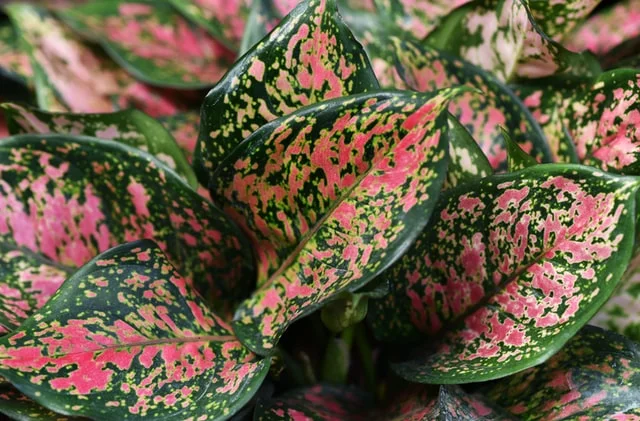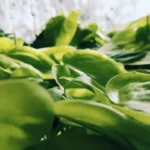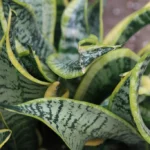Table of Contents
Introduction
Aglaonema varieties are a flowering plant, part of the Arum (Lily’s ) family. They originated in tropical areas of Asia and New Guinea.
They are sometimes known as Chinese Greens and are diverse in their colors, with large glossy leaves, short stems.
There are many different varieties including the Peace Lily that most people would be familiar with.
They are mostly pot plants, a few do grow quite big, and they will usually do better inside, they range from colorful to green, and will brighten up your home.
Aglaonema Varieties
There are more than 100 varieties of Aglaonema and dozens of plants with pink, chocolate, and pink tinges, they fit very well into the interior design of most houses, adding a touch of color to the most somber room.
If you are going to grow them in your garden, they will tolerate some shade, but many need a well-lit spot.
Aglaonema modestum has huge green leaves and has been proven to purify the air. It was named by NASA as one of the top 10 air-cleaning plants, so this may be a plant that you want in your house.
Aglaonema Care
This plant does not like soggy soil, so there is a fine line between keeping the soil moist and not overwatering it. Always allow the soil to dry out between waterings.
They really don’t require a lot of care and are frequently seen in offices, as tabletop plants. They are not meant to be in bright sunlight, indirect light is better for the plant, and some humidity.
Fertilizing Your Aglaonema Varieties
Use liquid fertilizer and fish emulsion, this will keep them healthy. Because they tolerate low light, they are often placed in areas with no light. Don’t over-fertilize as this can build up and burn the roots of the plant.
If you decide to re-pot your plant, do this in Spring and Summer, as the plant will have a better chance of survival.
Aglaonema Varieties History
Grown as a lucky plant in Asia for centuries, and they were introduced to the Royal Botanic Gardens in the UK in 1885, and since then have been cultivated and many new varieties developed.
It came from an Indo-Malayan climbing herb, growing wild in the tropical jungles. Because they were in the undergrowth of the jungle they are able to tolerate low light conditions, and won’t tolerate any cold weather.
Propagation of Aglaonema Varieties
Propagation is usually done with cuttings and dividing base shoots and re-poting the new growth.
The plants are useful in the house as it has been proven that they will purify the air of benzene and formaldehyde and this makes them popular in office areas where you can’t always know what is in the air.
They are commonly known as Chinese Evergreens because the Chinese originally cultivated the plant.
They are part of the Araceae family that Philodendrons come from, and one of the earlier hybrids was The Silver Queen a silvery green, leafy indoor plant popular in the late 1970s.
Thousands of Aglaonema Varieties
Thousands have now been identified, and the number is still growing, and many of the newer commercial varieties are highly successful, and some are getting bigger with broader, longer leaves.
Are Aglaonema Varieties Poisonous to Humans?
Yes, they are poisonous as they contain calcium oxalate crystals and if ingested they can damage the membranes and cause skin irritation.
If you have animals or small children it is a good idea to have your plants in hanging baskets where they are well out of reach. If a plant is ingested by a child, take them straight to Accident and Emergency for Treatment.
How to Grow Aglaonema Varieties in Your Garden
- Choose a warm sheltered spot in the garden against a stone or brick wall that receives plenty of light and sun.
- Dig a hole wider than the size of the roots of the plant.
- Untangle the roots, and position the plant in the hole.
- To give the plant a good start use loamy soil.
- Group plants together to offer protection to one another.
- Remove a few of the new leaves, pull them out allowing your plant to bush out.
- Water in lightly, so the excess water drains away.
- To get good flowering plants, don’t overwater, as you won’t get blooms with too much soil moisture.
High Humidity for Aglaonema Varieties
Both outdoors and indoors your plant will thrive with a higher humidity level. In the house, you can mist the leaves regularly with a misting spray, as this will raise the humidity levels, as will having a group of similar plants together.
Inside it can give your home a whole new look to have an amazing group of plants together in one area. The plants with silver variations need brighter conditions, so put them nearer to the window.
These plants don’t respond well to any sudden drop in temperature, so try to keep an even temperature especially in the middle of winter.
Algaonema Varieties Pests
Tiny flies will leave spots on your leaves, or brown bumps on your stems, and this is often caused by aphids. Use an Organic White Oil Spray to get rid of them, as they will distort new growth and you won’t want that to occur.
It will be safe to spray inside, shutting the door to the room for a while before going in again, to allow the oil to take effect.
Don’t use soapy water on these plants as it will damage their leaves. You may even get a spider mite infestation you may have to use a very weak solution of a green cleaner to get rid of this pest.
Conclusion
Aglaonema Varieties are very very beautiful, especially as pot plants in your home where you can keep them in optimal health. They don’t normally get pests, but when they do it is important to get rid of the pest quickly.
If you have several different Aglaonema Varieties you will soon work out which ones suit your ‘ home environment’ the best, as we all have some plants that thrive in our care and others that don’t.
Photo by David Clode on Unsplash



